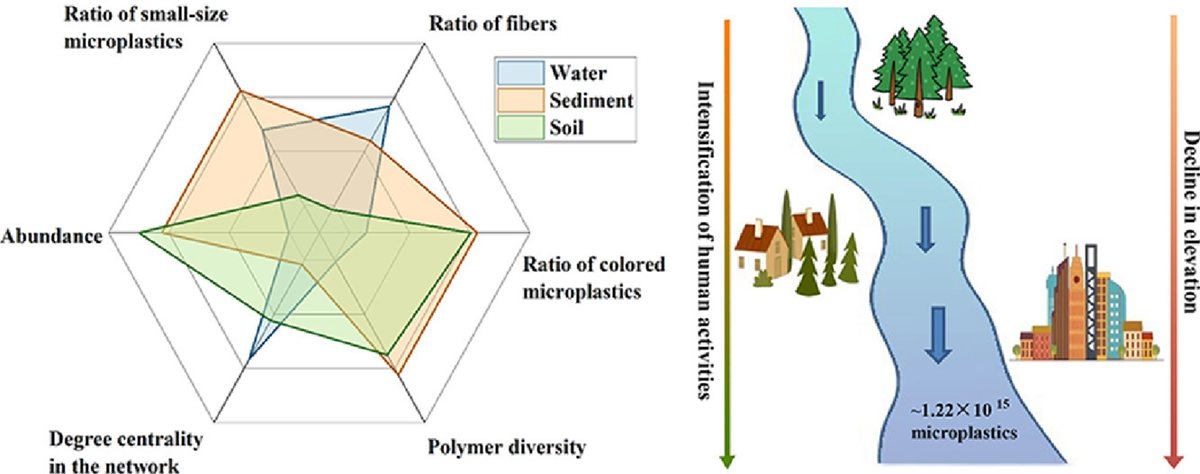Name:YANG Yuyi
Tell:
Email:yangyy@wbgcas.cn
Organization:Wuhan Botanical Garden
Environmental Fate of Microplastics in the World's Third-largest River Gets Unveiled
2022-02-24
Microplastics are spreading all over the world and become an emerging pollutant in the water environment. Rivers may play an important role in the transportation of microplastics from land to sea. However, field investigations on the environmental fate of microplastics at the whole watershed scale are still lacking, which is crucial for clarifying the actual roles of river systems in transporting microplastics into the ocean.
Supervised by Prof. YANG Yuyi, YUAN Wenke, an assistant researcher of Wuhan Botanical Garden, used the methods of basin-wide investigation and microplastic community analysis to explore the source, migration, and fate of microplastics in the Yangtze River Basin, so as to propose policy recommendations for better remediation of microplastic pollution involving riverine systems.
Research showed that microplastics were universal and heterogeneous in the Yangtze River Basin, and were transported over long distances in the river extending to the ocean. Domestic wastewater, fishery activities, and surface runoff may be the main sources of microplastics in the Yangtze River Basin. Complex geographical and anthropogenic factors contributed to the prevalence of microplastics increased from upstream to downstream. The density and size of microplastics may be the key factors affecting the migration of microplastics in different compartments. Sedimental microplastics showed a high ecological risk due to their small size and high vertical mobility.
Additionally, community analyses on microplastic polymers were introduced and highlighted in this study, which showed high potentials for future microplastic research. Microplastic communities in different environmental compartments were significantly different and highly correlated with geographical distance. The major cities at the middle and lower reaches were considered pivotal nodes of microplastic pollution in the Yangtze River Basin, thus should receive more attention in the prevention and control of microplastics in the future.
It was preliminarily estimated that 1.22×1015 microplastic items (0.05~5 mm) entered the sea through the water (97.54%) and sediment (2.46%) of the Yangtze River in 2019. Thus, water management and wastewater treatment should be the top priority of microplastics mitigation in the Yangtze River Basin.
The research was published in Water Research entitled “Environmental fate of microplastics in the world's third-largest river: basin-wide investigation and microplastic community analysis”. This work was supported by the National Natural Science Foundation of China and the Special Research Assistant Project, Chinese Academy of Sciences.

Graphical abstract of the research (Image by YUAN Wenke)